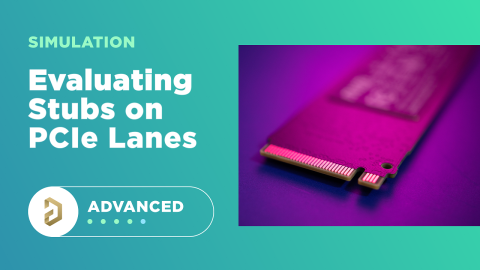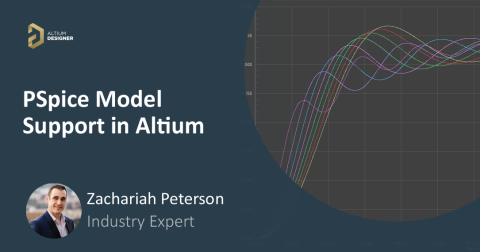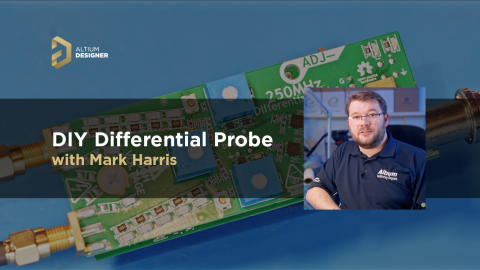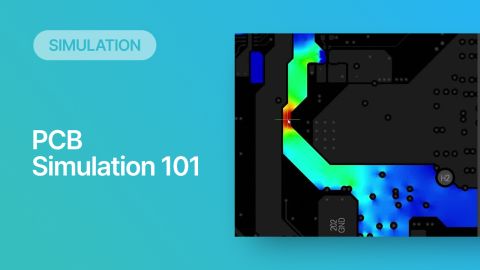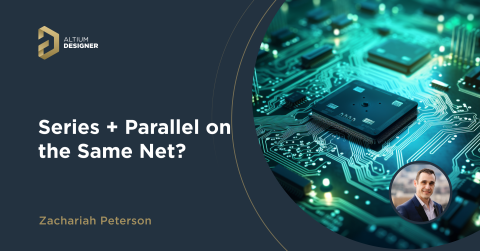Avoid GIGO in Your PCB Simulation Tools

Simulation tools are extremely useful for understanding electromagnetic behavior in a design. Simulations speed up your analysis tasks and they give you the opportunity to identify simple errors before they ruin a design’s functionality. As long as the simulation you create can accurately reflect the actual situation in your circuit board, you can rest assured the results will be reasonably accurate when replicated in experiment.
Unfortunately, this does not always happen. Simulations allow you to simulate just about anything, and these applications can’t read your mind. This means that the simulation you are actually running might not fully reflect the actual environment in your PCB. If you have inaccurate settings input into the simulation, the outputs will most likely also be inaccurate.
When simulation results are inaccurate, your test results will also appear to mismatch from your simulation and analysis.
- Your measurements were performed incorrectly
- Your simulation produced the wrong results
So which is most likely to occur in your situation? Most engineers are very familiar with taking measurements, but getting simulations correct requires specialized knowledge, and sometimes it takes a specialized computational degree. But with simple strategies you can avoid the GIGO problem in your simulator and get the most accurate results for your design.
Garbage In, Garbage Out
The industry has been calling this mismatch between simulation and reality garbage-in garbage-out, or GIGO. When it happens, you’ll have a mismatch between your testing outcomes and your simulation results. GIGO can arise in circuit simulations, 3D electromagnetic simulations, thermal simulations, mechanical simulations, or any other type of simulation you can imagine. It’s one of the biggest problems that comes from relying on simulation applications, but it is probably the least-discussed aspect of their usage.
Think about what happens in a circuit simulation just for a moment. Most designers should be familiar with SPICE and its use for simulating circuit behavior. These simulations rely on accurate circuit models for your components (including capacitors, transistors, and inductors) to properly describe circuit behavior. If you don’t have the right circuit models for your components, then you should not be surprised when simulation results do not predict behavior that matches measurements.

Electromagnetic simulators are even more powerful tools, but they are also more difficult to use to prevent GIGO. Simulations of a physical PCB layout can deviate greatly from circuit behavior. This is because circuit simulations can’t account for the 3D wave propagation seen in real PCBs, and this depends heavily on the geometry of the system you want to simulate.Get the simulation bounds wrong and you will have results that don’t jive with your measurements.
Avoid the Garbage in PCB Simulation
Understand the simulation settings - Simulation applications have many important settings that affect the accuracy and the simulation time. These include things like meshing settings, simulation region limitations, treatment of curves or edges, and time/space steps. If these are not set correctly, then you should not be surprised when the simulation produces unrealistic results or results that don’t match measurements.
Understand boundary conditions - A boundary condition is an important setting in electromagnetic simulations, and the boundary conditions in the model will have a big effect on the results. Learn and understand what boundary conditions mean and how they affect the results from a simulation, don’t just assume the default selection in your simulator will work for every situation.
Qualify simulation settings against a reference - When setting up a simulation with its settings and boundary conditions, it’s a good idea to qualify those settings against a reference situation. Use the settings and model to simulate a situation where you already know what the results should look like. Don’t jump straight into a unique situation where you don’t already know the answer.
Simulate the measurement - Remember, you’re eventually going to qualify a simulation against a measurement, so that’s the actual situation you should be simulating. For example, if you plan to evaluate a transmission line in a TDR measurement, then your simulation stimulus should look like your TDR stimulus. If your stimuli don’t match, then don’t be surprised when your simulations and measurements have significant differences.
No matter what you want to simulate, Altium Designer® includes a built-in simulation package and connectors to interface with the industry’s best electromagnetic simulation applications. To implement collaboration in today’s cross-disciplinary environment, innovative companies are using the Altium 365™ platform to easily share design data and put projects into manufacturing.
We have only scratched the surface of what’s possible with Altium Designer on Altium 365. Start your free trial of Altium Designer + Altium 365 today.
